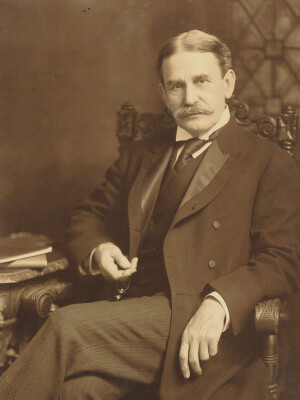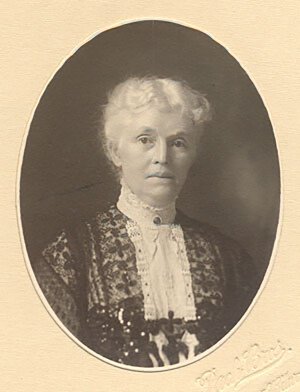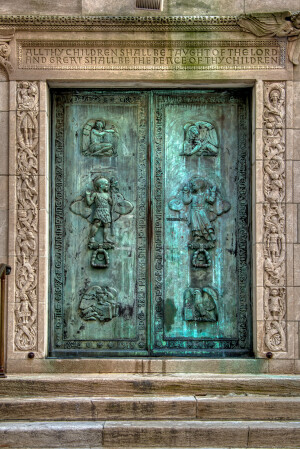An Excerpt of Remarks delivered by Rector Dean Wolfe on September 17, 2023
Some you already know about David Hummel Greer, who served as the Rector of St. Bartholomew’s Church from 1888 to 1904 and later as Bishop of New York. I believe he’s one of the most outstanding Rectors St. Bart’s has ever had, and given the people who have served this parish over the years, that’s saying something!
Of course, none of us ever had the opportunity to meet him, or his wife, Caroline Augusta Keith, or his children, including especially William Armstrong Greer. So, I’m going to do my best to paint you a quick picture of an extraordinary man and his beloved family.
David Greer was born in 1844 in Wheeling, Virginia (which is now part of West Virginia). He was born along the Ohio River in the foothills of the Appalachian Mountains. Ordained a priest in 1868, he became Rector in Covington, Kentucky, where he met, and in 1869 married, Caroline Augusta Keith.
Greer served as Rector in Providence, Rhode Island and arrived as Rector of St. Bart’s in 1888. He served here for 16 years as Rector, seeking to build a parish which provided significant social services to those in need, in addition to offering worship and Christian instruction. Under Greer's leadership, St. Bart’s opened six Sunday schools in five languages, established a Rescue Mission on East 42nd Street, and built a large Parish House and Medical Clinic further down the street on East 42nd Street
Ministry, for Greer, demanded sacred service to the poor, the hungry, the dispossessed, and the forgotten immigrant populations of his day. (In fact, Greer learned Yiddish in order to better communicate with more immigrants.)
There are many accounts of Greer’s time at St. Bart’s, but there are two pieces of information to which I wish to draw your attention.
1. First, he warned people against assuming that their own way was so good that they need not seek God’s way to replace it. He was a great preacher and teacher who reminded his people that they still needed to trust in God.
2. Second, he always guided people towards service. This led to the creation of the “parish house movement” which swept mainline urban churches.
He loved the people and work of St. Bart’s with all his heart and that love was ever-present in the passion and earnestness of his preaching. What most intrigues me in the writings about Greer are the descriptions of his character. He was known for his humor, initiative, and eagerness for the fray. His calmness, judgment, patience, thoroughness and consistent industry were also noted.
He had a way of knowing people, and an incredible memory. So, while the sign out in front of St. Bart’s read “Strangers Welcome,” there were truly no true strangers for Greer – only friends.
After several failed attempts to sway him to accept other call—including his being elected unanimously as Bishop of Western Massachusetts!—in 1903, Greer finally allowed himself to be elected Bishop Coadjutor for the Episcopal Diocese of New York and, in 1908, he succeeded Bishop Potter as Bishop of New York.
In writing about choosing St. Bart’s to be the place for his consecration as Bishop, he described it as, “St. Bartholomew’s, where I have lived and loved and been loved.” A lot of us have that same feeling!
His accomplishments as diocesan Bishop were many, including the development of the Cathedral Close, which included the building of St. Faith’s House, a school for deaconesses (the women workers of the Church); the Bishop’s House, and the Cathedral School; the creation of the Bronx Church House—one great parish house for the newly created Bronx churches to share; and the Hope Farm, which provided food, shelter, and work for destitute men and boys.
After 16 years of Greer as Rector, St. Bart’s had become known as the home of liberal Christianity, also known as “practical Christianity.”
Greer’s son, William Armstrong Greer, was a practical businessman of his day, who served on the Vestry from 1906 to 1937. We know a lot less about William, but we do know—that is one very LONG term of Vestry service!
William was a governor of the New York Stock Exchange and a partner in the banking and brokerage firm of Greer, Crane, and Webb. He served as treasurer of the Parish House on 42nd Street and the Community House.
And, with the love of a devoted son, he gave the bronze doors for the brand-new Chapel (with the symbols of the four Evangelists) as a memorial to his parents.
The completed Sanctuary of the new church was designated as a memorial to David Greer, and an Easter offering in 1928 of $123,637 was devoted to its completion.
Last, but not least, let’s turn to Caroline Augusta Greer. Among her many civic interests, was her commitment to Hart Island; New York City's public cemetery and the final resting place of over one-million individuals.
She began a movement to erect a monument on the Potter’s Field, marking the resting place of the city’s dead and standing as a symbol of Christian friendship.
In December of 1907 it was reported in the Mission News,
“No longer is the resting-pace unmarked, for there now rises from the knoll, plainly seen by the passing ships, a large granite cross, bearing the inscription, “HE CALLETH HIS OWN BY NAME” This symbol of the resurrection is the pledge to those who lie there of their heritage in the Christian’s hope.”
Toward the end of their lives, a friend of both David and Caroline spoke of Mrs. Greer, and said, "I don't know how I can face the separation after so many years of companionship."
In fact, their separation at death was very brief, as they died within one month of each other.
These are our people. Their history is our history.
The Greers are at the heart and soul of this church.
With gratitude, wonder, and continuing love let us honor, remember, and cherish the Greers - David, Caroline, and William, as beloved members of the household of God, cherished members of the St. Bart’s family of faith.
It is in our doing, in our loving, and in our being - they are with us.

David Hummel Greer, Rector of St. Bartholomew's Church 1888-1904;
consecrated Bishop of the Diocese of New York at St. Bartholomew's Church on January 26, 1904.

Caroline Augusta Greer, wife, mother, community leader, and champion of the cross erected on Potter’s Field, Hart’s Island.

William Armstrong Greer, St. Bartholomew's Church Vestry member 1906-1937,
gifted the bronze doors of the chapel, which lead out onto Park Avenue, in memory of his parents.

The sanctuary of St. Bartholomew's Church on Park Avenue was designated a memorial to the Right Reverend David H. Greer on Easter Sunday 1928.
